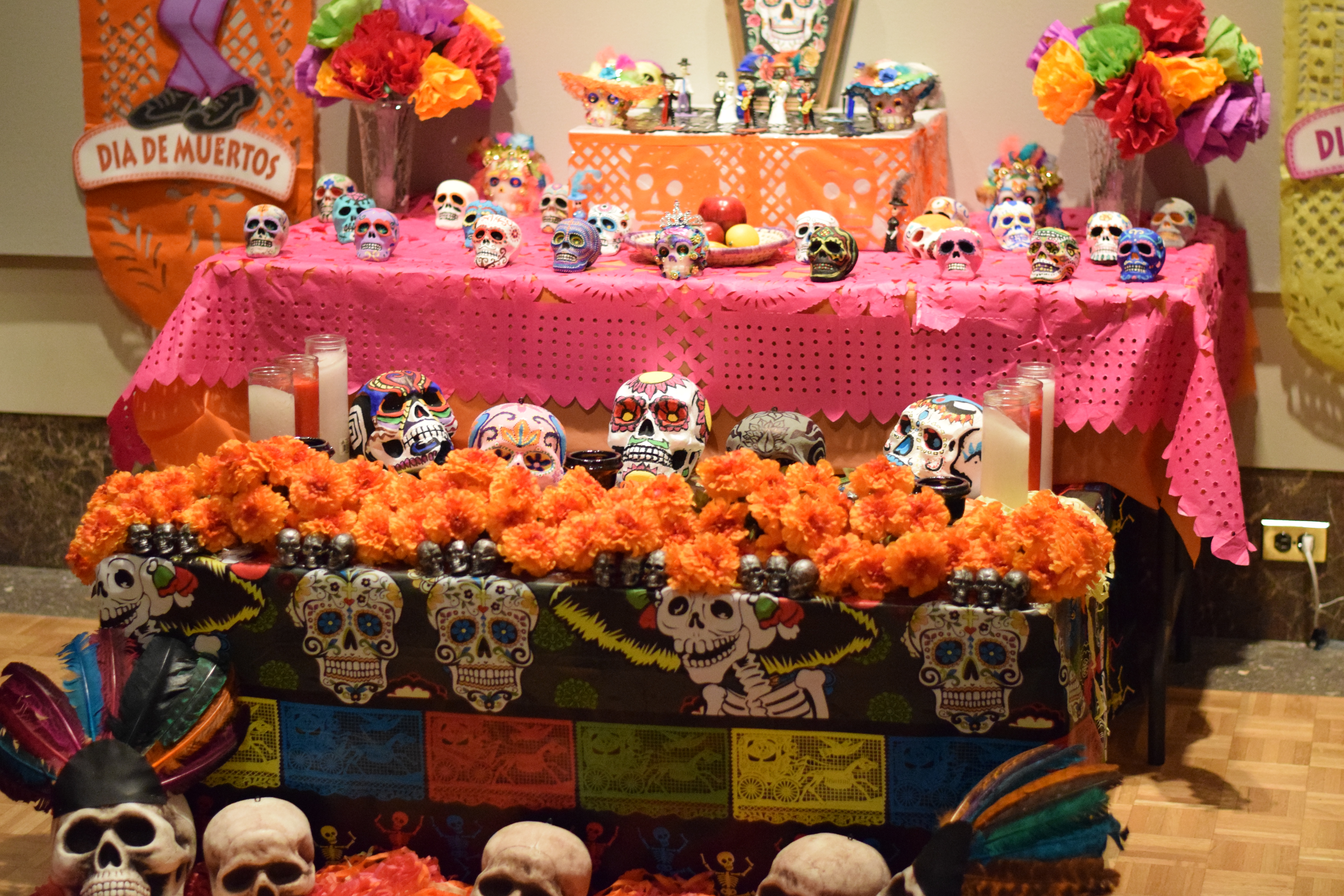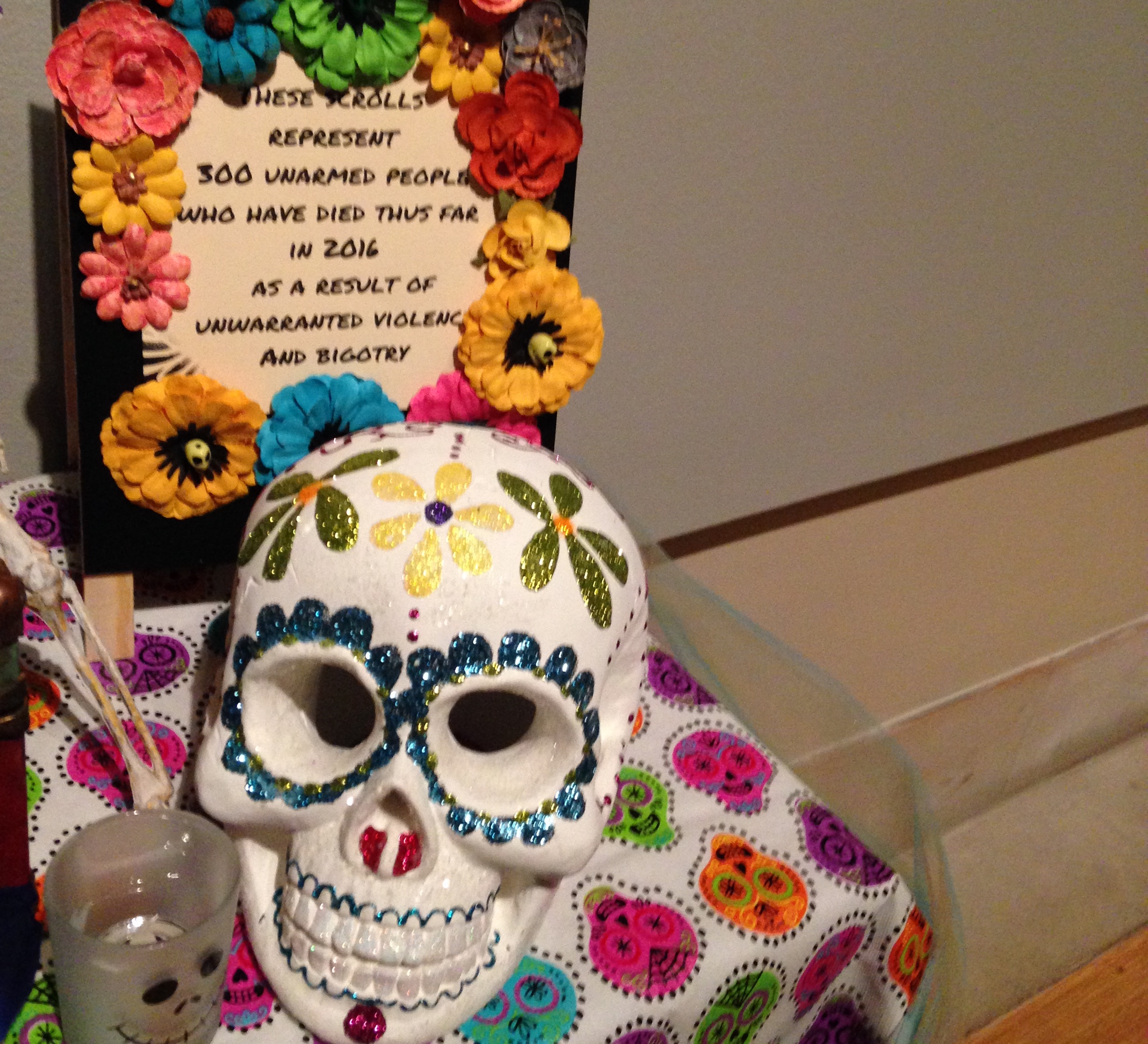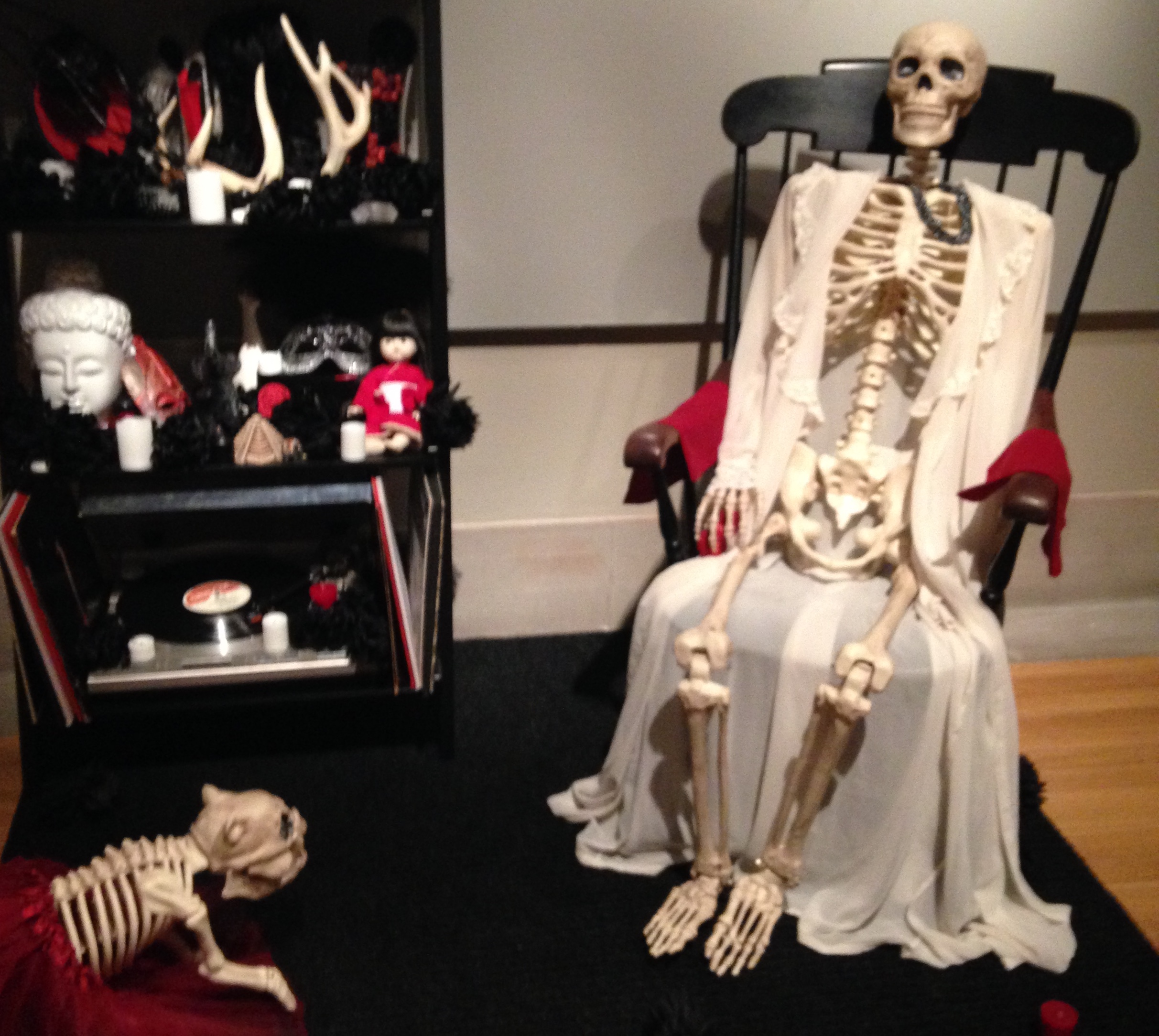Day of the Dead at the DIA
Gallery

The Detroit Institute of Arts (DIA) holds art pieces and historical artifacts collected from all over the world. These pieces are displayed and presented to the public to help educate people about other cultures and explain the experiences within that culture.
“The Ofrenda Altars” exhibit, in honor of the Day of the Dead, runs through next weekend. This exhibit not only recognizes the Mexican holiday, but also explains the symbolic meanings behind the celebratory traditions.
The main tradition of this holiday is to build a shrine for loved ones who have passed away. It is believed that from Oct. 31 through Nov. 2, the spirits of the dead return to the world of the living. Typically, when building these shrines, people decorate them and put offerings on the table. Each offering is symbolic and conveys a different meaningful message to their loved ones. Most of the art pieces displayed at the exhibit had offerings with a panel alongside it describing the hidden messages conveyed in English and Spanish.
Offerings, or “ofrenda” in Spanish, include fruit and food, specifically a special sweet bread called “Bread of the Dead.” Other offerings included flowers called marigolds which are also known throughout Mexico as the flower of the dead. Many people use this flower for celebration because of its alluring color and aroma which are rumored to appeal to the spirits of the dead. Many of the shrines were also decorated with skeletons. These skeletons were painted and dressed in formal wear to give off a jovial yet respectful presence. Decorative skeletons are meant to reveal that the passing of life and the entrance of the afterlife is a joyous occasion. We should not be sad because our loved ones are gone, but rejoice because they have moved on into the next phase of life, which to this culture has been described to be quite pleasant.
At the end of the exhibit there was a photo reel showing the faces of various people who have passed and were being honored. In that room was also the museum’s interactive portion to the showcase. There were blank index cards provided with a pencil and a scrapbook of people who already partook in the interaction.
Patrons wrote the name of a recently deceased family member or friend and added their name to the scrapbook. Also, on the opening night of the Day of the Dead exhibit, the atrium before the entrance hosted an interesting performance of an eerie song. The performer had face paint on that gave him the appearance of an undead being. He combined the use of percussion instruments and harmonized guttural sounding growls along with it to give off a spooky vibe. As he proceeded to beat on the drum and vocalize in gutterspeak, the combination actually sounded like there was a ghostly presence within the room.
Ultimately the DIA’s Day of the Dead exhibit was a meaningful cultural experience. There were beautiful art pieces and ornate shrines that held meaning not only to the artists who created them, but to viewers of all ages. The exhibit provides a detailed insight on the Mexican traditions used for honoring the dead and shows the empathetic personality behind the holiday. Instead of having a holiday dedicated to scaring people and taking candy, the ofrenda altars extend a warm welcome to the living to celebrate the memory of those who have passed.
The exhibit is not only a cultural experience, but it is also humbling. The altars are dedicated lovingly to everyday Mexican Americans. Visitors are permitted a glimpse into their lives as we honor the dead along with their families and friends.



